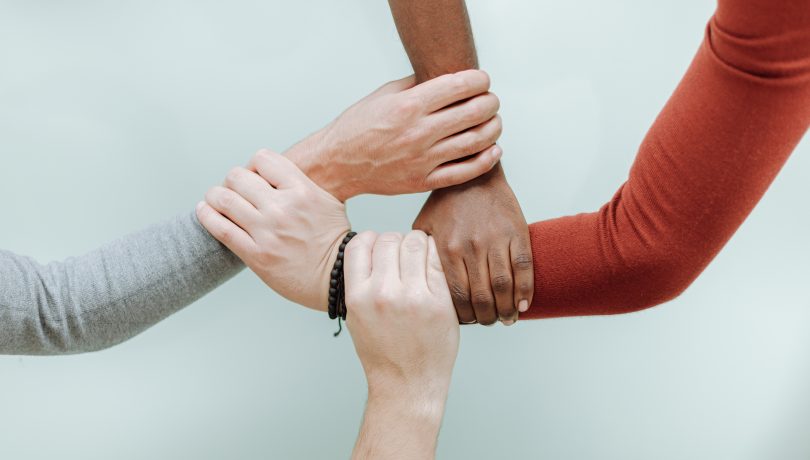
The Need for Diverse Representation from the World’s Most Populous Nation
I do not represent all of India. These words came from the mouth of one of our US college students in a small group discussion. The student expressed her frustration at having to constantly be the South Asian spokesperson in many of her college classes.
As a firm believer in the transformative power of education to uplift those less fortunate, it is sometimes hard not to wince when I see how the system continues to perpetuate tokenism over true diversity.
Indian students are second only to Chinese students when it comes to the largest international demographic across US colleges and universities. One might assume, then, that Shanti Bhavan students studying in the US would see a diverse Indian population at their respective colleges, with reflections of themselves mirrored in the faces and lives of fellow students.
However, this is rarely the case. Even at colleges that boast the highest international enrollment, the number of Indian students with a lived experience similar to our students is nearly nonexistent. There appear to be two main reasons for this: geography and socioeconomic class.
Anecdotally, our students share with me that the Indian students they meet at their colleges typically come from central or northern states in India—where many of the most prestigious high schools are located. As a result, students from these geographical areas sometimes converse in Hindi with one another if they are looking for some privacy amidst a crowd of mostly Americans. According to our students, North Indian students also often don’t know Tamil, Kannada, or Telugu, the languages spoken by most of our students’ families. And much like the various geographical regions in the US, North and South India can also be quite different in terms of lifestyle; fashion, pop culture, and even food preferences vastly differ between the regions. These differences can lead to an isolating experience; when our students approach their first group of Indian students at their college, they sometimes feel more alienated than welcomed. The student referenced at the beginning of this piece mentioned that of all Indian students at her private liberal arts college of approximately 4,000 students, only three are South Indian.
What is more significant is the stark contrast in socioeconomic standing between Shanti Bhavan students and most other Indian international students. Statistically speaking, international students from India tend to come from more affluent backgrounds and often attend well-resourced high schools. One student, whose US university ranks high in terms of international enrollment and has an Asian population of roughly 20 percent, shared that every Indian student he has met on campus has come from one of three high schools in India. These high schools are for wealthy kids, something he quickly realized based on their stories about fancy vacations and extravagant birthday parties. And while there is nothing inherently wrong with being rich, unfortunately, it’s not all benign frivolity.
According to another one of our students, her more privileged peers in the South Asian organization at her school believe the caste system no longer exists. Essentially, when issues of caste discrimination come up for discussion, she hears classmates say, “There is nothing to discuss. This is no longer an issue in India.” As one can imagine, this is a difficult conversation to have for a young woman who was once berated by a village elder for using a water fountain because she was Dalit.
The experience of feeling that fellow Indian classmates are out of touch is not unique to Shanti Bhavan students. According to writer Bharat Rathod (2023), many higher-caste individuals in the US also erroneously presume that their fellow Indian peers come from similar backgrounds. “Based on my 12 years in the US, I can say that most of the dominant caste people in the US consciously and unconsciously believe that all people from India are their people – i.e., dominant caste individuals. Many of them harbour casteist prejudices and stereotypes that Dalits cannot study at US campuses or elsewhere overseas and that higher education is not their forte. In other words, the reigning belief is that only dominant castes have the merit and intellect to pursue higher education in the US.”

While a few colleges have included caste-oppressed people as a protected group in their institution’s antidiscrimination policies (e.g., Brandeis University, Brown University, and Colby College), lower-caste representation unfortunately remains low among elite US institutions. Prejudice and discrimination keep caste-oppressed people from achieving economic prosperity in India. Generation after generation, these communities are forced into low-paying, menial jobs considered too dirty for those more privileged. Such generational poverty means that families being able to send their children to an accredited high school, let alone attend college abroad, is out of the question.
Ashok Danavath (2023), a Senior Researcher for the National Campaign on Dalit Human Rights (NCDHR) in New Delhi, writes:
“Unfortunately, the number of students from Schedule Caste (Dalit) and Schedule Tribe (Indigenous) backgrounds joining U.S. universities in various programs is very low or even nonexistent, primarily due to the lack of availability of scholarships.”
It’s true, very few colleges and universities in the United States are able to meet 100% demonstrated need for low-income students. In my experience, a little over 50 have indicated they have the funding in place to do this, and those are generally the most selective private and public universities with the lowest acceptance rates.
Danavath continues:
“Given that American universities and city councils have legally acknowledged caste practices, it is crucial for these institutions to step up and fulfill their role as leaders in academia and education. Universities must go beyond symbolic gestures and establish comprehensive reparation programs, including scholarships with well-defined plans to attract and uplift students from these backgrounds.”
Fortunately for our students studying here in the US, the colleges they attend have recognized their value; our students’ challenging backgrounds and unique perspectives bring authentic diversity to their campuses. Just by being themselves, they teach lessons to those who unknowingly need them. Whether our students receive need-based aid or are part of prestigious scholarship programs such as the Karsh Scholars at Duke, the Handler Scholars at the University of Rochester, or the King’s Scholars at Dartmouth, they are experiencing a world that wouldn’t have been possible without such funding.
Even though US higher education still has a long way to go in terms of diversity, equity, and inclusion, I still believe in the power of higher education, and I am so proud of our students—and their respective colleges—for the progress made thus far. I look forward to seeing which lucky college will be next to have a Shanti Bhavan student in their community.